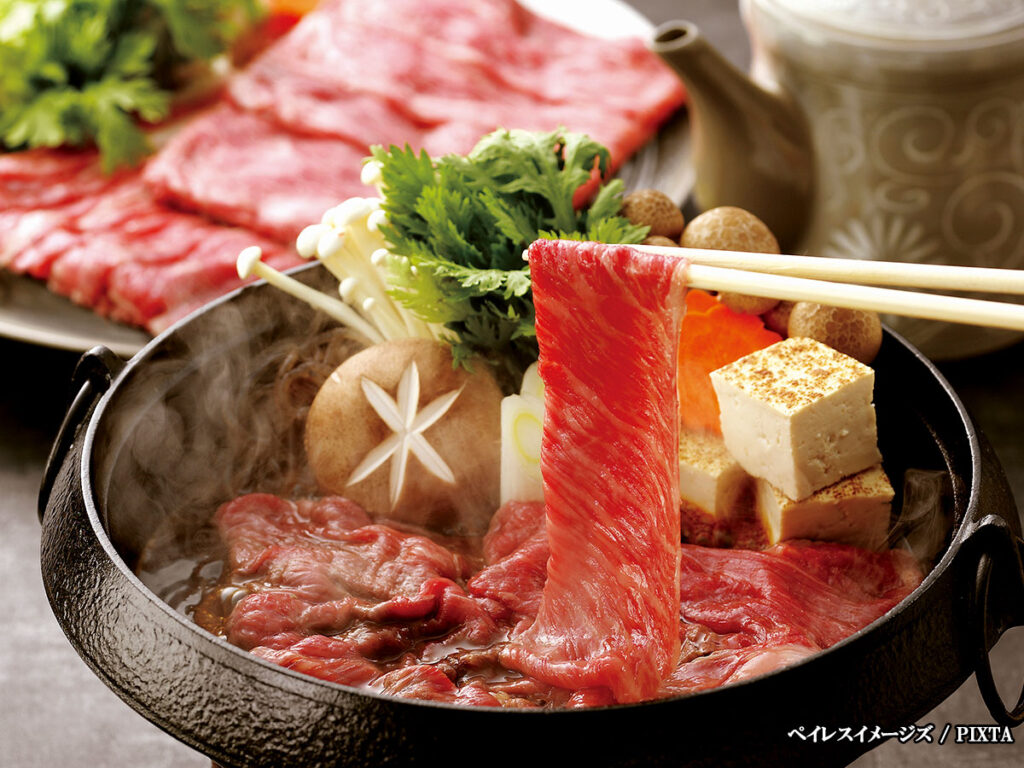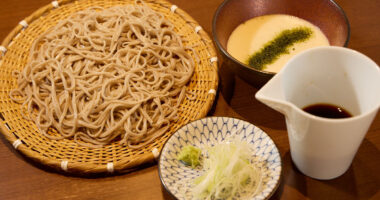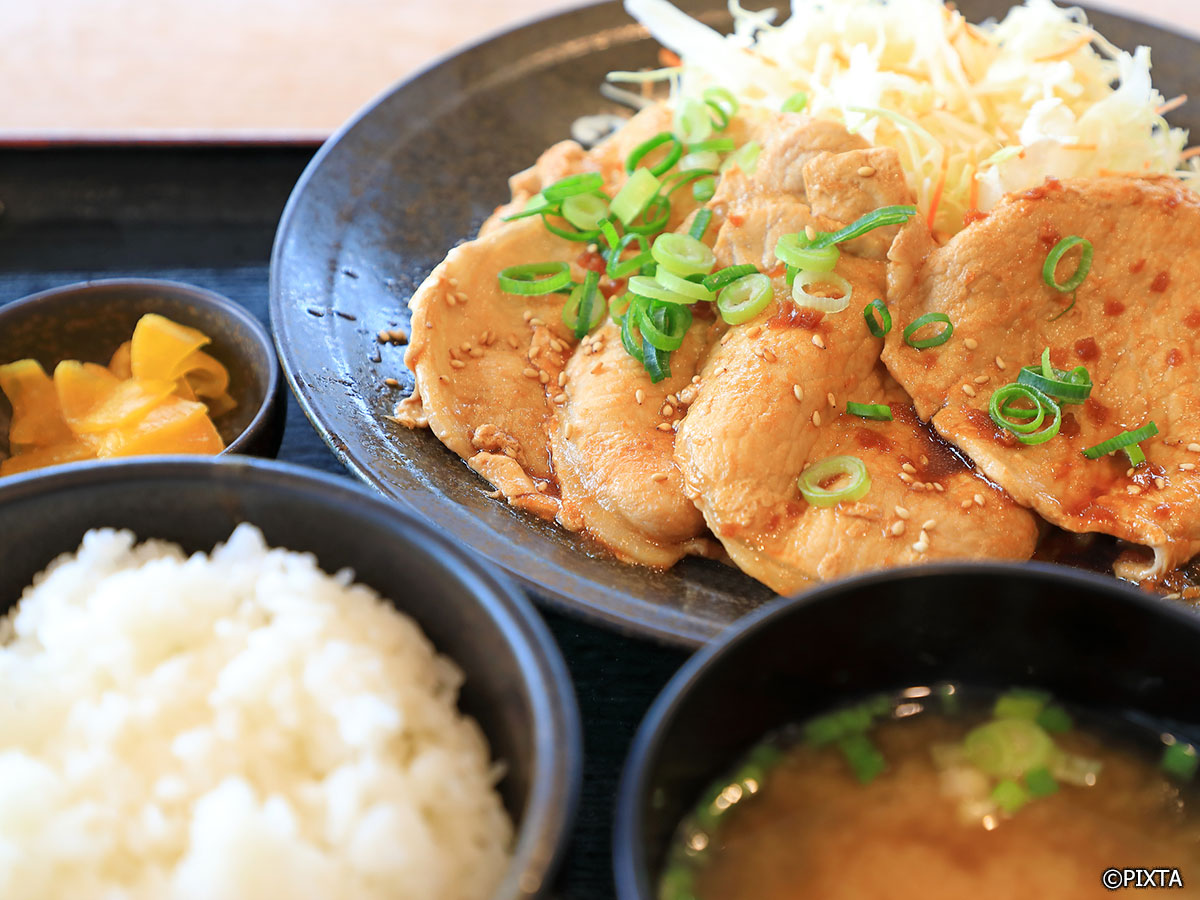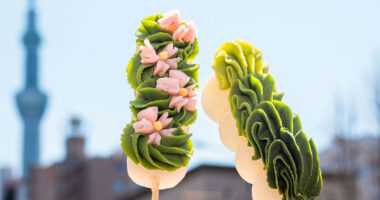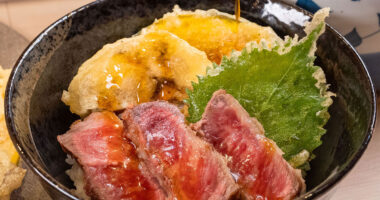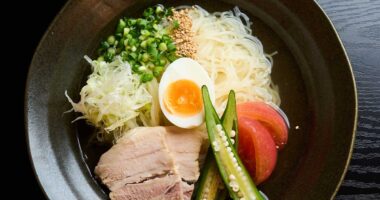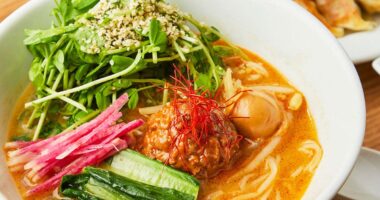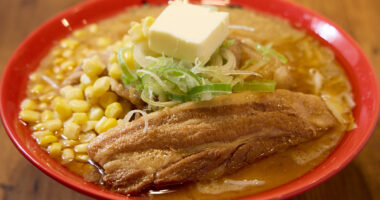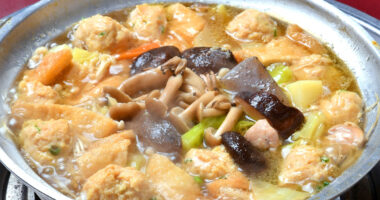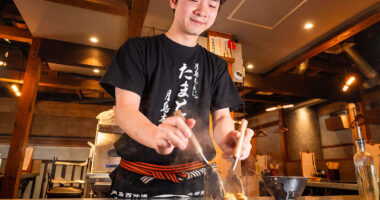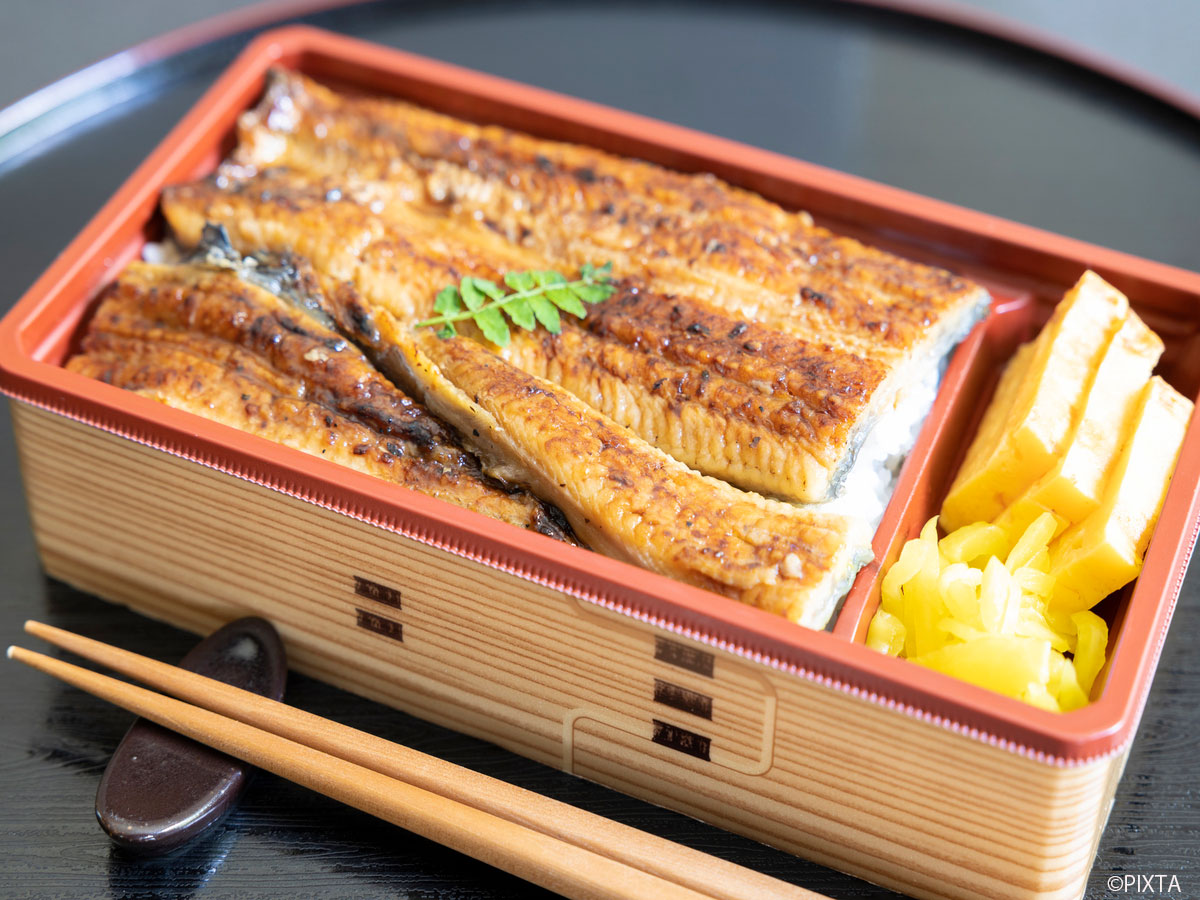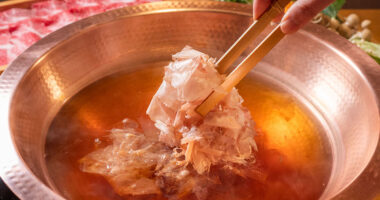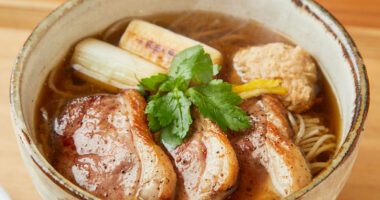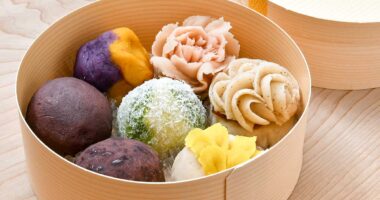Hot pot, or nabe ryōri in Japanese, is a delightful way to enjoy a communal meal that warms both body and soul.
Types of Japanese hot pot
Japanese hot pot features a variety of broths and ingredients catering to different tastes. Common broths include simple dashi made from kombu (kelp), rich chicken stock, or bases flavored with soy sauce or miso. Typical ingredients are fresh vegetables, meats, seafood, tofu, and noodles. Popular styles of hot pot include sukiyaki (sweet soy-based beef hot pot) and shabu-shabu (light broth for swishing thin slices of meat).
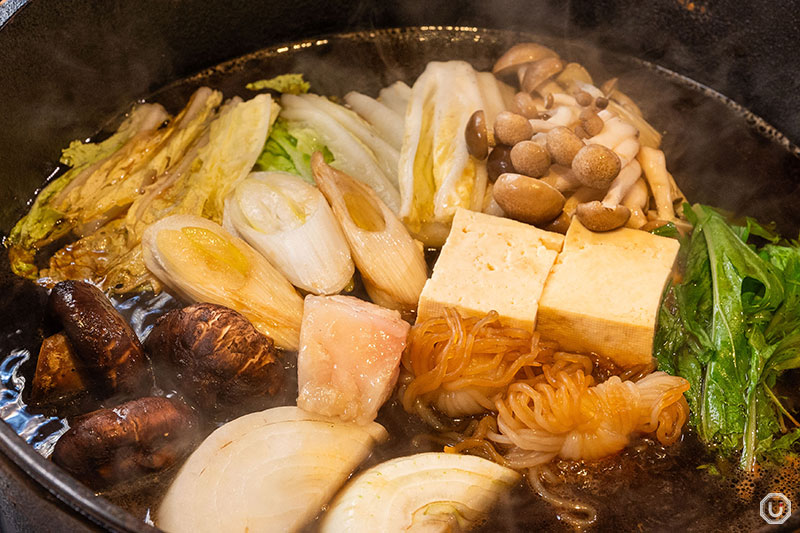
Delicious ingredients simmering in a sukiyaki hot pot at Shabu-shabu Sushi Hassan in Tokyo
Order of adding ingredients
Although some restaurants will serve hot pot ready-to-eat, at other restaurants, diners add the ingredients and make it themselves. In such cases, it’s useful to know how to proceed. The sequence in which ingredients are added to the hot pot is important for achieving the best flavor and texture.
- Add broth base items first: Start with things like chicken and seafood which add flavor to the broth the more they simmer.
- Add hard vegetables: Root vegetables like carrots and daikon radish, which require longer cooking times, go in next.
- Add meats and soft vegetables: Once the hard vegetables have softened slightly, add thinly sliced meats, tofu, mushrooms, and leafy greens. Enjoy your hot pot!
- When available, add noodles or rice last: After you have eaten most of the ingredients, a popular way of concluding a hot pot meal is by adding noodles or rice to absorb the remaining flavors of the broth.
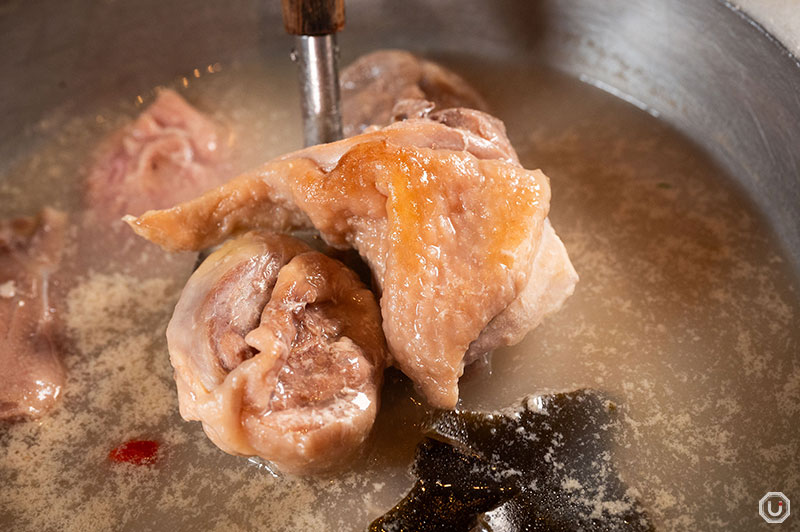
Bone-in chicken thigh used to extract broth in a mizutaki chicken hot pot at Hakata Jidori Fukuei Kumiai Shibuya in Tokyo
Note that the order can vary with different types of hot pot. For instance:
- In sukiyaki, the Kansai style sears the beef first with a bit of beef fat before adding the soy sauce, sugar, and sake broth, while in the Kanto style, the broth is simmered first, and the beef and vegetables are added together.
- In shabu-shabu, diners cook individual pieces by swishing them briefly in the pot— containing either hot water or light broth—before eating.
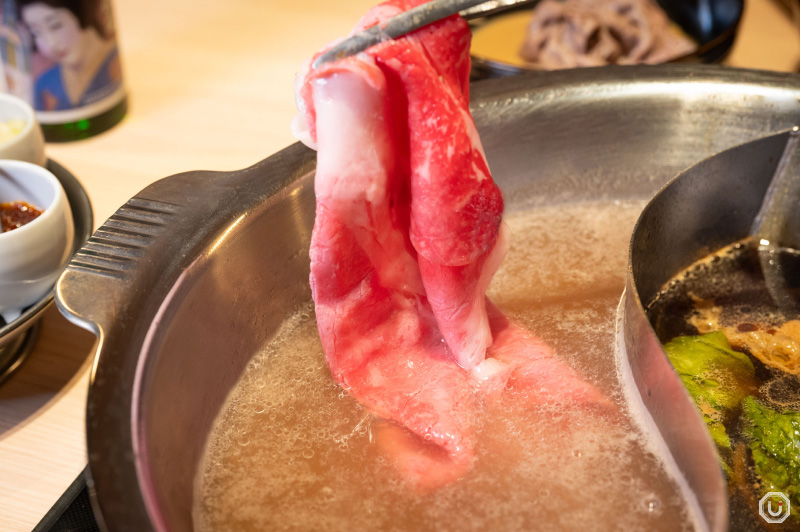
Swishing a slice of beef into the shabu-shabu broth at Mo-Mo PARADISE in Tokyo
How to use sauces and seasonings
Enhance your hot pot experience with the use of dipping sauces and seasonings.
- Individual bowls (tonsui): Each person should have a small bowl for their dipping sauces, such as ponzu (citrus-based soy sauce) and goma-dare (sesame sauce).
- Adding seasonings: Adjust flavors by adding condiments like soy sauce, miso, or spices to your dipping sauce or directly to the broth.
- Using raw egg: In sukiyaki, it’s common to dip cooked ingredients into beaten raw egg before eating, adding a rich and silky texture.
- International flavors: There’s a growing trend of incorporating international seasonings, such as Korean chili paste or other global flavors, into Japanese hot pot cuisine.
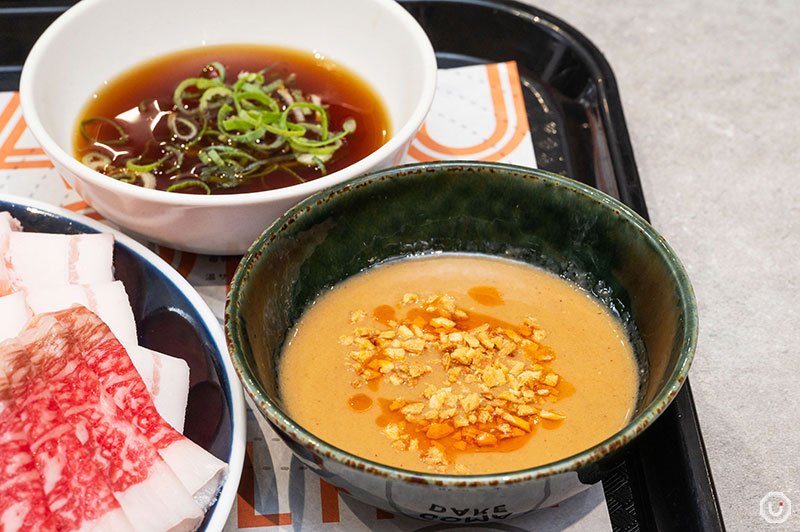
Ponzu and sesame sauces in a shabu-shabu feast at Hitori Shabu-shabu Nanadaime Matsugorou Shinjuku TOHO Building in Tokyo
Manners when enjoying Japanese hot pot
Proper etiquette ensures everyone enjoys the meal.
The “nabe bugyō” (hot pot master)
When a group of Japanese people eat hot pot together, whether at home or eating out, one person sometimes takes charge of managing the pot, adding ingredients, and ensuring everything is cooked properly. In some restaurants, a staff member may perform this role.
Serving etiquette
If you’re in a group with Japanese people and there’s a “hot pot master” at your table, allow them to handle the cooking and serving. If not, you can participate in adding ingredients and serving yourself while being mindful of others. Moreover, to maintain hygiene, use separate chopsticks or utensils for handling raw ingredients and avoid returning food items to the pot once you’ve taken them.
Solo dining options
Some restaurants offer individual hot pots, allowing each person to cook and enjoy their meal independently—a great option for solo diners.
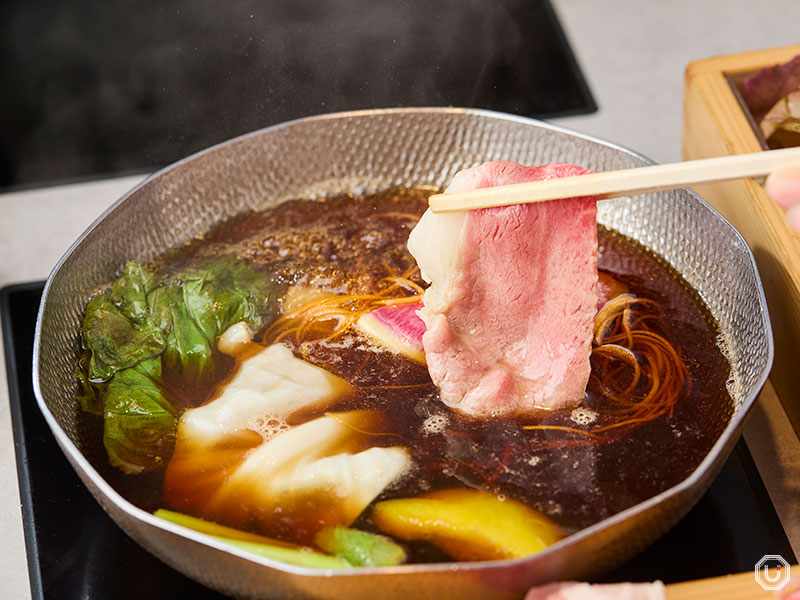
Enjoying a solo shabu-shabu feast at Shabu-Shabu Retasu Shibuya Center-gai in Tokyo
Hot pot is more than just a meal—it’s a cherished tradition that brings people together over shared food and warmth. The types mentioned above are only the beginning. When you’re in Japan, why not explore the variety of hot pot styles such as oden, chanko nabe, yose nabe, mizutaki, and more.
